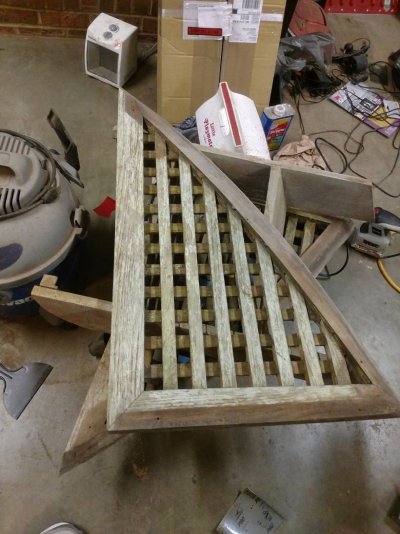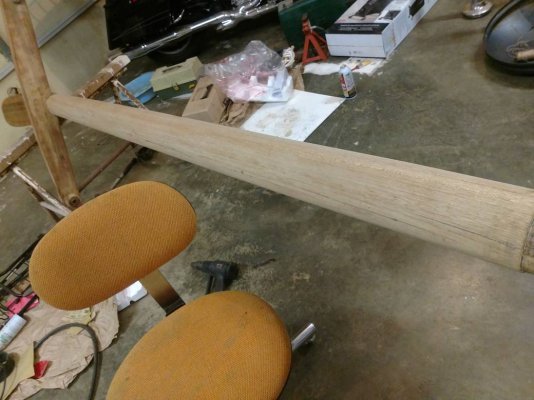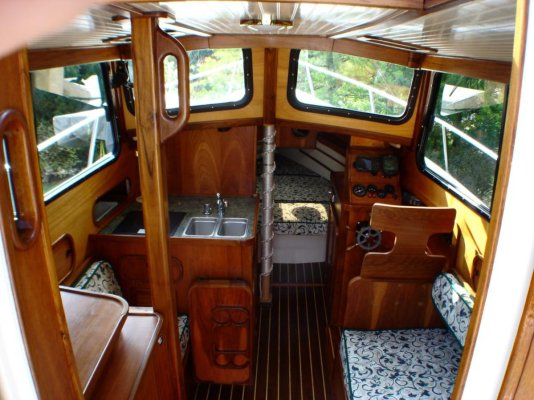I have sanded all I care to on the mast and boom they are still rather white .will this improve when I put the coating on?
I also have the old dried out fly bridge steps here also is this approach going to make the super slick to stand on.
thanks
Tim
No and Yes.
No the white will not go away. After looking at the photo of the grid I think what you are referring to as white is actually the normal greying of teak that has been left to age naturally. Works sometime but with dirty air it often just looks dirty. Or were they actually painted white??
Now on to my point. If you want the grey gone then use a "Teak Cleaner" and follow the instructions. It is an acid and needs to done with some care. Then use the neutralizer and wash and wash. Let dry for a day or two. Teak does not absorb water the way a lot of woods do but any gaps in the joints will hold some and if not gone will cause trouble.
THe colour of the teak will come back in the grate holes. Some sanding will be needed by wrapping a piece of paper around a tongue depressor or similar stick using a relatively coarse paper, suggest 120 grit. On the flat,very visible surfaces I use 220 grit. Don't go nuts though. The finish will slowly fill in the remaining roughness where the cleaner and the greying has removed some of the softer wood.
Varnish on steps is a recipe for a slip and a fall. Use a grit or walnut shells or something to provide a grip. Generally steps should not be varnished at all.
You could also install a self adhesive grit covered tape , available at most marine stores. But what ever is done ensure there is some thing for a firm grip or someone is going to pay a heavy price. Smooth varnish is slippery, wet smooth varnish is deadly.
I am not a fan of the epoxy for this application. I did use it and it changed the wood colour enough I was not happy. Scraped it off but not deep enough as I did not want to take off that much wood. I learned to think it is just another teak colour variation. I will admit most people have no idea, they think is's great.
But I know.
Lots of people do use it and successfully so choose carefully. But I will add that the buildup of varnish must be done and kept up to protect the epoxy or you will be scraping at least some of it. I would venture at least 8 coats and then 2 or three each year. Sun and weather will degrade at least one or two varnish layers.
I have also seen a couple of failures, bubbling, likely due to the wood not being COMPLETELY DRY. It was mahogany and mahogany will absorb some water the way teak will not. But still it was a failure and a heck of a lot of work to rectify. It made me leery so I don't use epoxy, just many coats of good spar varnish.
Which ever way you go a thorough wipe down with some thing like acetone or similar must be done. Find out from the epoxy and varnish mfgr. what they recommend.








